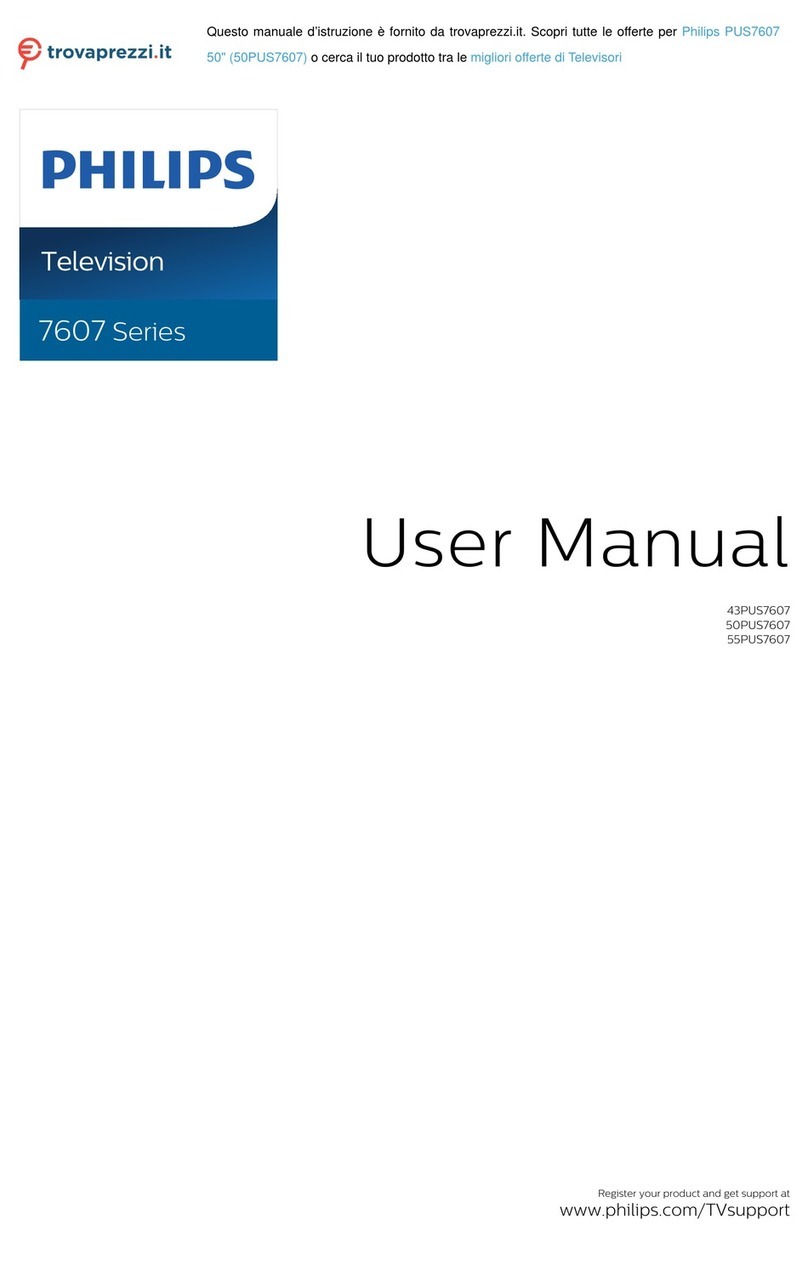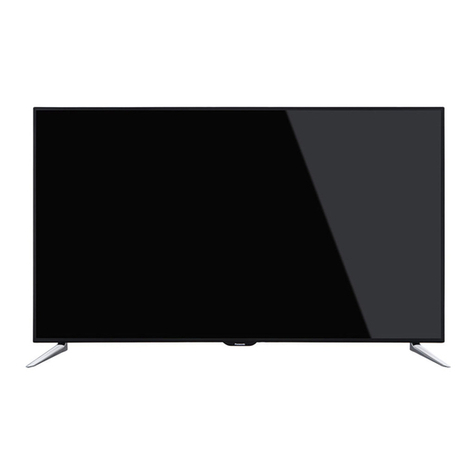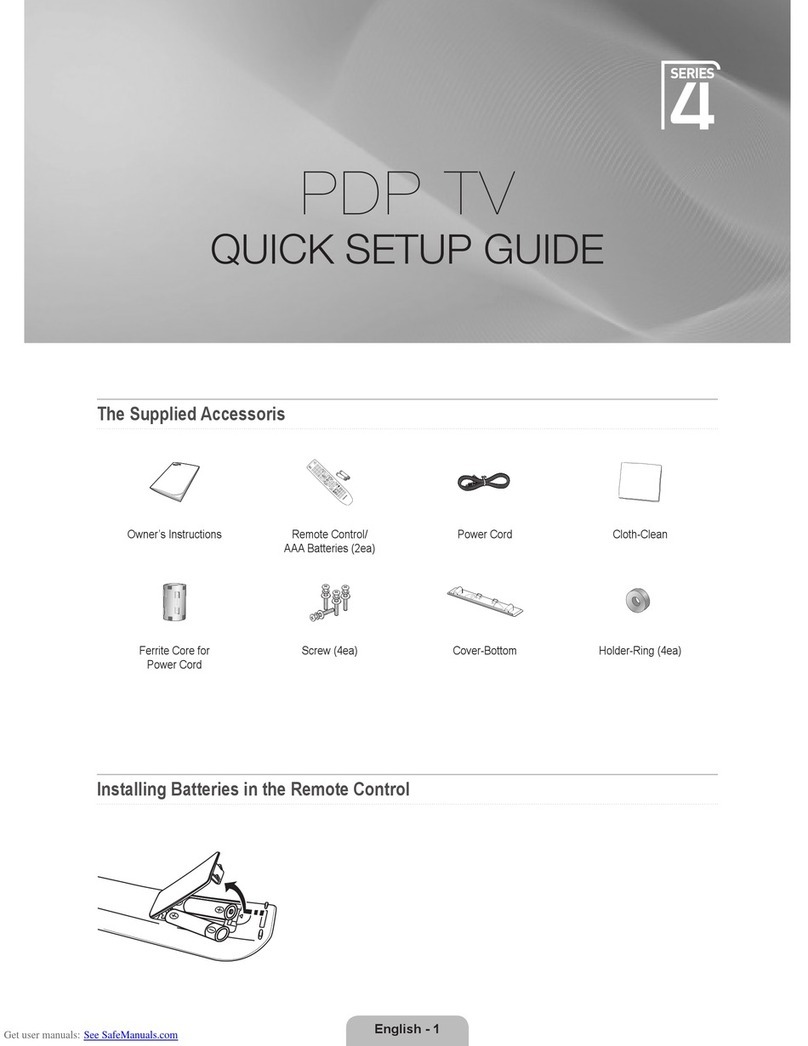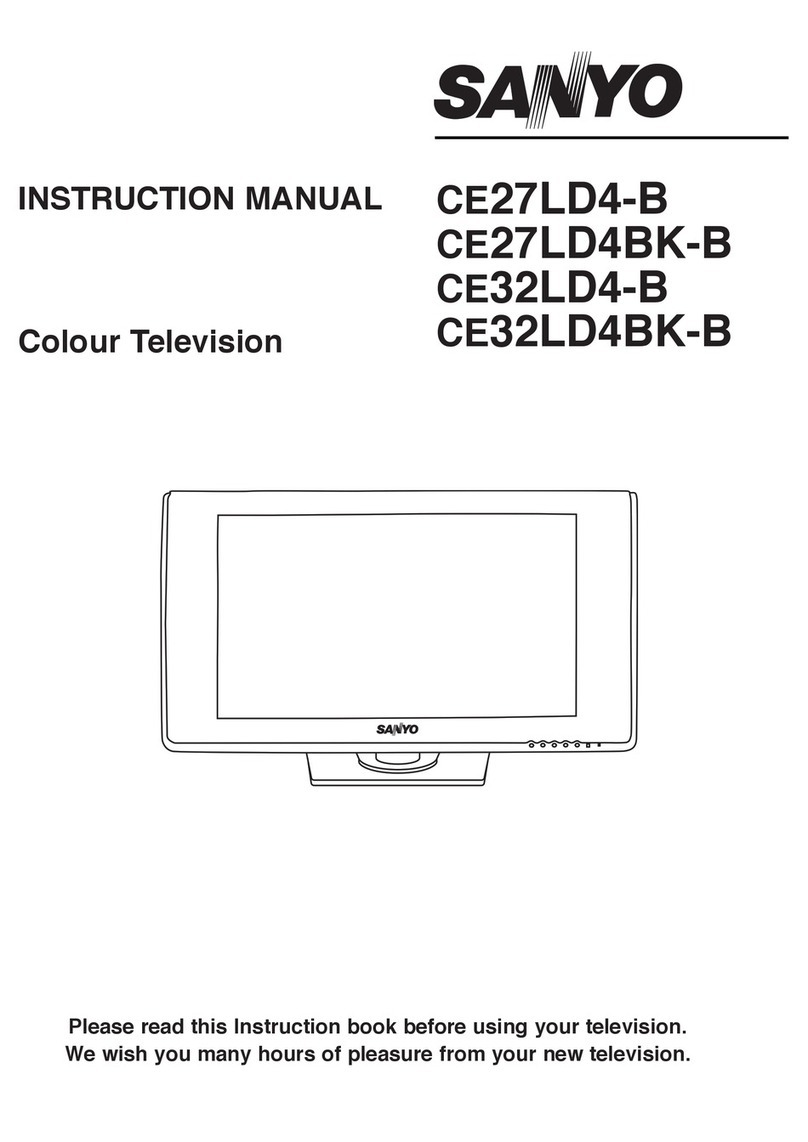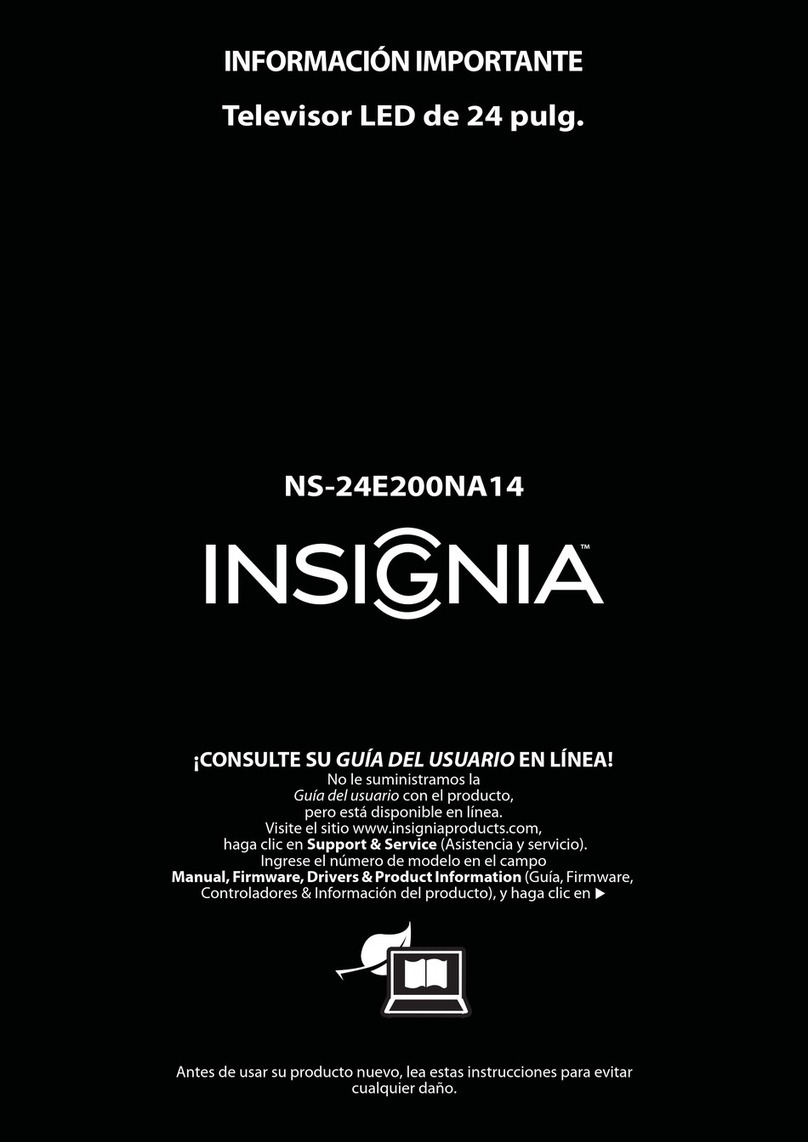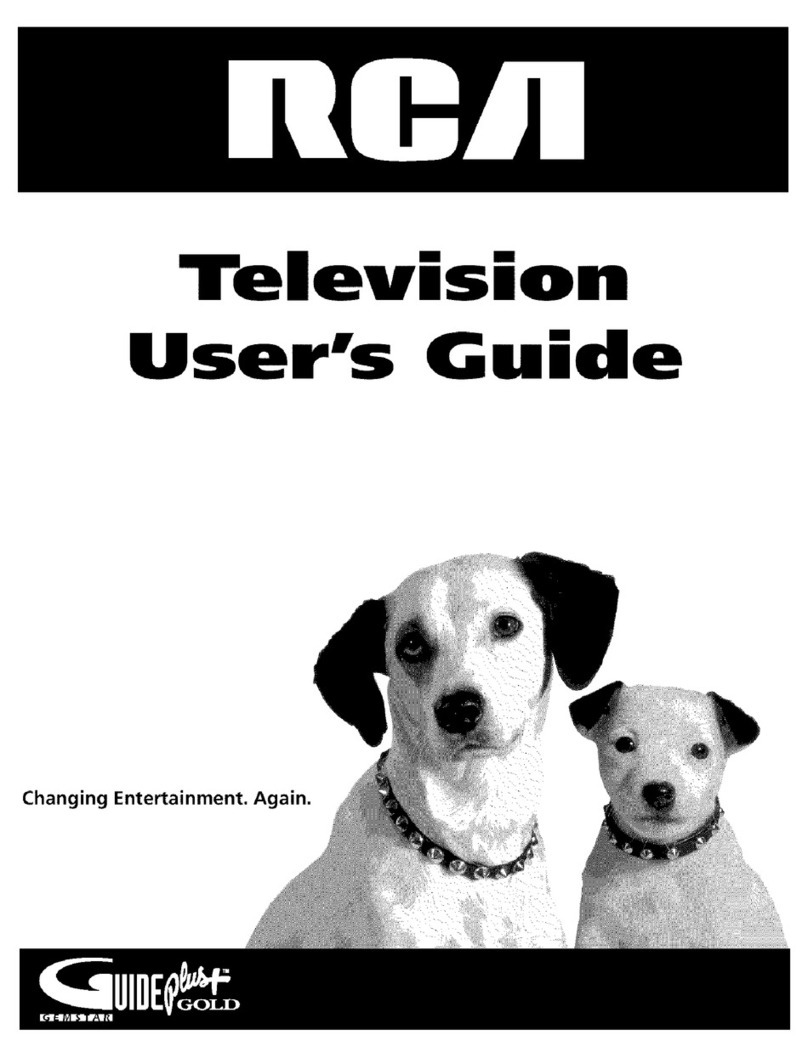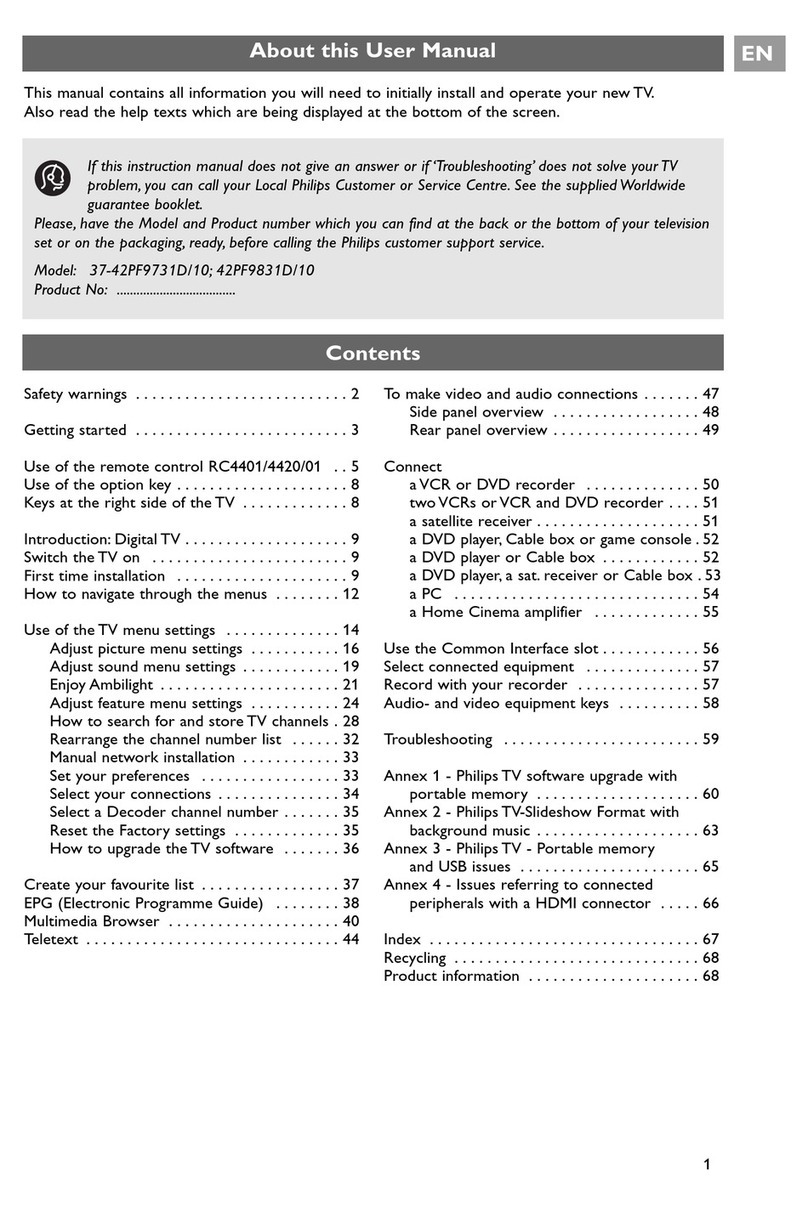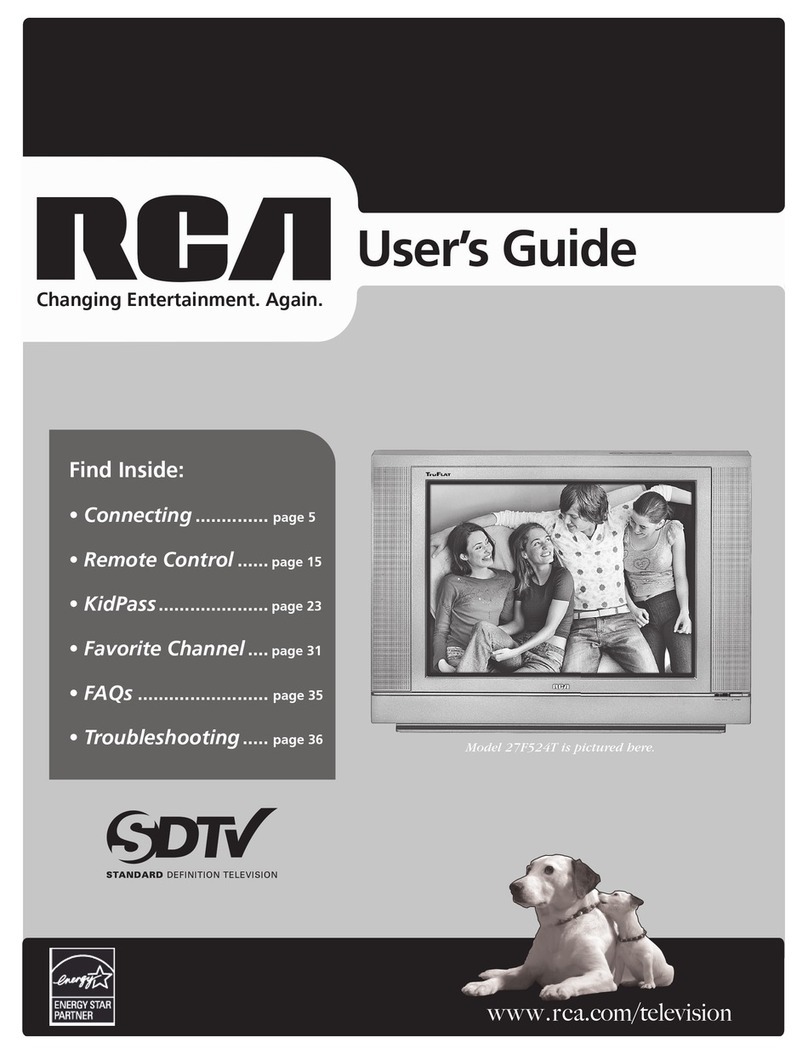ProofVision PV320A-HB User manual

Proofvision Outdoor LED TV
Please read these instructions thoroughly before attempting to operate or adjust this television.

•Installation must be carried out by a qualified installer i.e. AV technician.
•The installation of the cables must be carried out in a dry place and sealed tightly with the
8 screws provided. Failure to do this will void your warranty.
•The VESA screws provided should be the only screws used with the Proofvision Outdoor
TV, for spares please contact Proofvision directly.
•Please make sure the wall chosen to install on is of a substantial nature and that rust proof
fixtures are used.
•We strongly recommend the Proofvision screen is not installed in DIRECT SUNLIGHT
for long periods of times. The units top operating temperature is 60 Celsius and the unit
can reach this temperature if exposed to direct sunlight over a long period of time.
Never tamper with any of the components, or any other adjustment controls not mentioned in this
manual.
The LED panel used in this product is made of glass. Therefore, please take care it can break when
the product is dropped or applied with impact. When you are cleaning the panel, make sure the
power cord is pulled out from the plug receptacle. Then wipe the receiver with a dried soft cloth.
All technical work on the TV should only be performed by an electrician, due to the high voltage.


Note: the remote control has a waterproof IP68 rating.
Insertion of the batteries
1. Remove the back cover of the remote control with the supplied opening tool.
2. Pull out the PVC paper and insert one 3V battery, make sure the rubber gasket is inside the
slot to ensure the remote control is waterproof.
3. Replace the back cover of the remote control with the opening tool by twisting round the tool
until you hear a click sound.
Precautions when using batteries
Do not use different types of batteries that the remote control cannot support
Remove the batteries from the remote control if you do not intend to use it for a long
time
Do not drop the remote control
Replace the batteries with new ones when operation of the unit deteriorates

Front view of TV set
1. Menu-Press this button to show the menu choice
2. CH+ Press this button to increase the TV channel
3. CH- Press this button to decrease the TV channel
4. Power-Press this button to turn on/off the TV power
5. VOL+ press this button to increase the volume
6. VOL- Press this button to decrease the volume
7. Input Press this button to show the input sources
Note. 1. The front touch buttons are not the standard install, some models will not have the
buttons.
2. All the front buttons are touch keys
3. When the TV is on, all the buttons will have a blue background
Ports definition of TV set
1. DC 12V input
2. HDMI input
3. VGA input
4. AV input
5. RF(TV in)
Note:
All cables of ports are extended out from the TV bottom in a bundle
When using external equipment with this TV set, please read the instructions
external equipment.
Switch off all power supplies to the equipment and TV set before connection
Always ensure that the input and output terminals are correctly connected
All the above ports are standard, for some models, they may have less or more
ports according to customer’s request

1. POWER button-Press this button to switch on the TV
when in standby mode or to turn off and put on standby
2. MUTE button-Press this button to mute or restore sound
3. AUDIO button-Press this button to get Mono
channel/doubly channel/Stereo
4. ZOOM button-Press this button to switch between 4:3
and 16:9 picture format
5. VOL+, VOL- button- Increase or decrease the Volume
6. CH+, CH- button-To change the TV channel
7. ENTER button-Confirm the menu option
8. UP/DOWN/LEFT/RIGHT button-Press these buttons to
get last/next/left/right menu options
9. MENU button-Press this button to enter into TV main
menu
10. EXIT button-Press this button to go back to menu
11. 0-9 button-Press these buttons to get given TV channels
12. -/--button-One/two/three-digit channel selection
13. Return to previous TV channel
14. P-MODE button-Switch the picture
mode(USER/STANDARD/BRIGHT/SOFT)
15. S-MODE button-Press this button to switch to a different
sound mode

16. Return to previous TV channel
17. P-MODE button-Switch the picture
mode(USER/STANDARD/BRIGHT/SOFT)
18. S-MODE button-Press this button to switch to a different
sound mode
19. INPUT button-Press this button to switch the input source.
Change the SOURCE from VGA/HDMI/TV/AV
20. SLEEP button-Adjust the sleep timer
21. FAV button-Press this button to open or close favorite
program group
22. TV RADIO button-Press this button to switch to TV or radio
23. INFO button-Display the information on the top-right corner
of screen(e.g. channel number, TV system, resolution and
frequency for PC etc)
24. EPG button-Press this button to display preview programs
25. HOLD button-Press this button to enter into hold mode
26. LANG button-Press this button to choose different
languages
27. TETX button-Press this button to enter TELETEXT mode
28. SUBTITLE button-Press this button to display the subtitle
29. SIZE button-Press this button to zoom up half of the
TELETEXT page
30. REVEAL button-This command will only be valid if the
TELETEXT page is being displayed. This command displays any concealed characters in the
TELETEXT display
31. INDEX button-Press this button to enter the index page of the TELETEXT content
32. SUBPAGE button-Press this button to display a sub-page of the selected page
33. Red/Green/Yellow/Blue colour button-Press these buttons to execute various colour coded
texts/functions in TELETEXT




Incorporated in your TV unit are the most up-to-date devices to eliminate interference. Local
Radiation, however disturbances can be created which visibly affect your picture. Proper
installation, via a good aerial is your best safe-guards against these disturbances.
RF INTERFERENCE
Moving ripples across the screen are caused by nearby transmitting or receiving short-wave radio
equipment
DIATHERMY
Herringbone pattern and partial picture loss can result from the operation of diathermy equipment
from a nearby doctor’s surgery or hospital
SNOW
Weak TV signals from long distant stations result in a distorted picture and give the effect of
falling snow. An antenna adjustment or antenna amplifier may be needed
GHOST
Multiple images caused by TV signals reflected back from surrounding buildings, hills, aircraft,
etc. is minimized by correct aerial positioning.
CAR IGNITION
Nearby cars and electrical motors can cause small streaks across the picture or make the picture
roll
This manual suits for next models
2
Other ProofVision TV manuals


